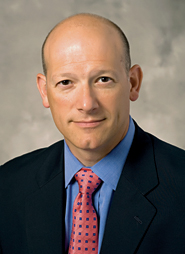What began as a way for high frequency traders to quickly access core economic data–such as consumer price indexes and unemployment numbers–has become an increasingly sophisticated data delivery system that is attracting the attention of market players outside the world of HFTs.
Machine readable newsfeeds take data from newswires and feed it directly to computers which can then act on that information automatically.
Steve Hughes, director of sales at the HFT service provider Exegy, said the high-frequency traders he deals with are not terribly interested in machine readable news feeds right now.
"When you can process a piece of information in 10 millionths of a second and get to the market with it, you know when news came out and a stock starts to react without even needing to know what the news is," Hughes said.
According to Hughes, machine readable news feeds might be more helpful to asset managers on the buyside who are trying to execute longer-term strategies at the best price.
In fact, speedy news analysis has been gaining a following among asset managers, according to Rob Passarella, vice president of financial markets for Dow Jones.

Asset managers frequently use multi-factor models that weigh various company fundamentals. Now some models use news as one of the factors they consider in examining a stock, Passarella said.
Those same asset managers can also use news to look for liquidity. Large money managers might find it difficult to trade small- and mid-cap stocks where they could hold sizable stakes in companies. Certain news events can trigger greater liquidity, and that might be a good time to execute longer-term strategies, according to Passarella.
Since investment banks have dramatically cut back their research desks, news has become a bit of a proxy for the feedback that used to come from researchers. Where industry experts used to move stocks, now that role is frequently taken on by journalists.
"I come out of the equity research world, and you know what’s happened to research in the last couple of years," Passarella said. "A lot of times what happens is that globally there aren’t enough people covering from a research perspective, and news in a sense fills in the gap for coverage."
The next step the industry takes might be gathering information found on social media sites, according to Passarella. He said there is a lot of data to be mined in terms of who is linking to what information.
Aite Group’s Adam Honore said while a lot of firms are analyzing social media, there is currently not enough historical precedent to gage how effective that will be. A lot of the people most knowledgeable about using social media are not interested in using that data for investing purposes, he added.
Google could potentially be a huge player in using data to make investment decisions, but according to Honore the search engine giant is leaving money on the table by not showing any serious interest in the area.
Though the big news services have broadened their approach to machine readable news beyond the high-frequency trading world, other niche players have emerged, promising to deliver data feeds deliberately created for HFTs, electronic market makers and algorithmic trading firms.
Jersey City-based Selerity tries to leave subjective measures alone and instead focuses on providing machine readable feeds of hard data. The firm goes beyond traditional core metrics, though.
In reporting on a company like Apple, for instance, Selerity will pull out not just key financial metrics like earnings per share, but will deliver other important numbers such as iPad and iPod sales.
Ryan Terpstra, founder and CEO of Selerity, said he leaves it to his clients to write feed handlers that can interpret the data and trade on it. His company has focused on simply getting multiple data points to traders as quickly as possible.
"We’ve had customers that have said, ‘we’d love if, for this investment bank, you could give me the divisional revenues,’ and we’re able to turn that around very quickly," Terpstra said. "Once we’ve made that enhancement, it is available to all subscribers of the platform."
Even quantitative-focused firms like Selerity are moving more into the news realm, though, trying to factor in unexpected developments like geopolitical events. Terpstra said the more sophisticated trading firms are already building models that can react to these types of unscheduled events.
"A majority of these models have been built really just looking at market data, and it doesn’t give them that 360-degree view they need to deploy more profitable trading strategies," Terpstra said. "Customers are saying, ‘Let’s not just look at market data-let’s look at news and event data and incorporate that into our multi-factored models.’"
Factoring in breaking news has always been important to traders-it’s just that in today’s fast-moving world, getting instant access to that news has become vital. Technology has sped up the rate at which news is published, so it only seems fitting that technology is speeding up the rate at which news is read, analyzed and acted upon.



